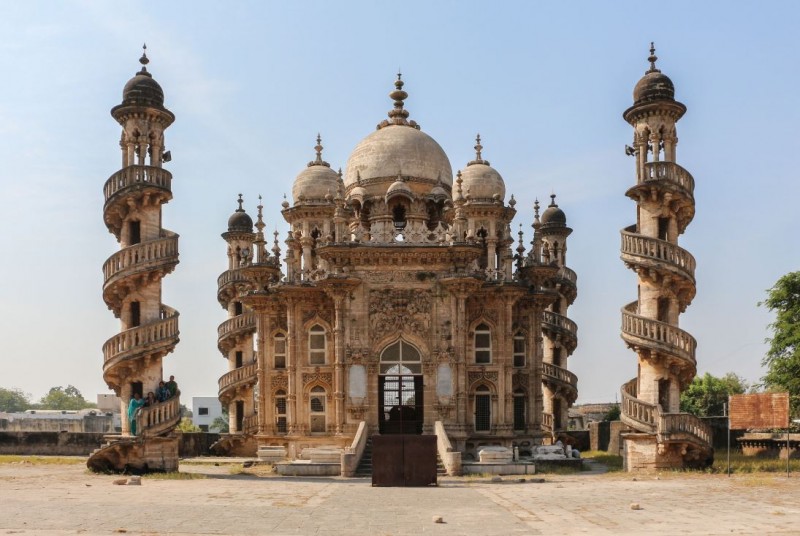
Introduction
Indian architecture is renowned for its rich heritage and diversity, reflecting the country's history, culture, and artistic expressions. With a legacy spanning several millennia, India boasts an extensive collection of historical monuments that stand as testament to its architectural brilliance. From magnificent palaces to intricately carved temples and imposing forts, these structures showcase the architectural prowess of ancient civilizations and serve as a window into India's past.
1. The Indus Valley Civilization and Its Architectural Legacy
The Indus Valley Civilization, one of the world's oldest urban civilizations, flourished around 2500 BCE. Although much of its architectural heritage has been lost over time, remnants of its advanced urban planning and construction techniques can still be observed. The cities of Harappa and Mohenjo-Daro featured well-organized street grids, fortified citadels, and impressive drainage systems. The architecture of the Indus Valley Civilization laid the foundation for subsequent architectural developments in the Indian subcontinent.
2. Dravidian Architecture: Temples of the South
Dravidian architecture, predominantly found in the southern regions of India, is characterized by towering temple structures adorned with intricate carvings and vibrant sculptures. These temples are dedicated to various deities and exhibit distinct architectural features, such as gopurams (towering gateways), vimanas (towering structures above the sanctum sanctorum), and mandapams (pillared halls). The Brihadeeswarar Temple in Thanjavur and the Meenakshi Temple in Madurai are prime examples of the grandeur and architectural finesse of Dravidian temples.
3. Mughal Architecture: The Grandeur of Islamic Influence
The Mughal dynasty, known for its opulent architectural style, left an indelible mark on Indian architecture. Combining Islamic, Persian, and Indian elements, Mughal architecture reached its zenith during the reign of Emperor Shah Jahan. The iconic Taj Mahal in Agra, a UNESCO World Heritage Site, exemplifies the symmetrical beauty and intricate marble inlay work characteristic of Mughal architecture. Other notable structures include the Red Fort in Delhi and the Jama Masjid in Old Delhi.
4. Rajput Architecture: Forts and Palaces of Rajasthan
Rajput architecture, prevalent in the western state of Rajasthan, showcases a blend of Hindu and Islamic architectural styles. The majestic forts and palaces of Rajasthan, such as the Amber Fort in Jaipur and the Mehrangarh Fort in Jodhpur, exhibit intricate detailing, ornate frescoes, and delicate lattice work. These structures not only served as royal residences but also acted as defensive fortifications, showcasing the ingenuity of Rajput architects.
5. Buddhist Architecture: Stupas and Monasteries
Buddhist architecture in India flourished during the Mauryan and Gupta periods. Stupas, such as the Great Stupa of Sanchi, were constructed as sacred Buddhist monuments, housing relics of Lord Buddha. These hemispherical structures featured elaborate gateways adorned with sculptural depictions of Buddhist narratives. Monasteries, such as the Ajanta and Ellora Caves, were carved into rock formations and adorned with intricate murals, showcasing the artistic brilliance of ancient Buddhist craftsmen.
6. The Influence of European Styles
With the arrival of European powers in India, architectural influences began to merge. The Indo-Saracenic style emerged, incorporating elements from Indian, Islamic, and European architectural traditions. Notable examples include the Victoria Memorial in Kolkata and the Gateway of India in Mumbai. These structures exhibit a fusion of architectural styles, symbolizing the cultural amalgamation that took place during India's colonial era.
7. Contemporary Indian Architecture: Balancing Tradition and Modernity
In the modern era, Indian architects strive to strike a balance between preserving traditional architectural styles and embracing innovative designs. Buildings like the Lotus Temple in Delhi, designed in the shape of a lotus flower, and the Vidhana Soudha in Bangalore, showcasing a blend of Dravidian and Indo-Saracenic styles, exemplify this fusion. Additionally, sustainable architecture and eco-friendly designs have gained prominence, promoting environmentally conscious construction practices.
8. Conservation and Restoration of Historical Monuments
Preservation and restoration efforts are essential to safeguard India's architectural heritage. The Archaeological Survey of India (ASI) plays a crucial role in maintaining and conserving historical monuments. Conservation techniques, such as chemical cleaning, structural repairs, and documentation, ensure that these architectural marvels endure for future generations to admire and appreciate.
9. Impact of Indian Architecture on Global Design
Indian architecture has left an indelible mark on global design trends. The use of intricate carvings, vibrant colors, and unique architectural elements has inspired architects worldwide. Elements of Indian architecture can be seen in contemporary structures across the globe, showcasing the cross-cultural influence and enduring appeal of Indian design principles.
10. Conclusion
Indian architecture and historical monuments offer a captivating journey through time, showcasing the artistic brilliance, cultural diversity, and architectural ingenuity of ancient civilizations. From the awe-inspiring temples of the south to the grandeur of Mughal palaces and the fortresses of Rajasthan, each structure tells a story and leaves an indelible impression on visitors. The preservation and appreciation of these historical treasures are crucial to maintaining India's cultural heritage for generations to come.
Indian Travel and Tourism Destinations
Unusual and Quirky Museums Around the World
Scenic Train Rides: Enjoying Picturesque Landscapes on Unforgettable Rail Journeys